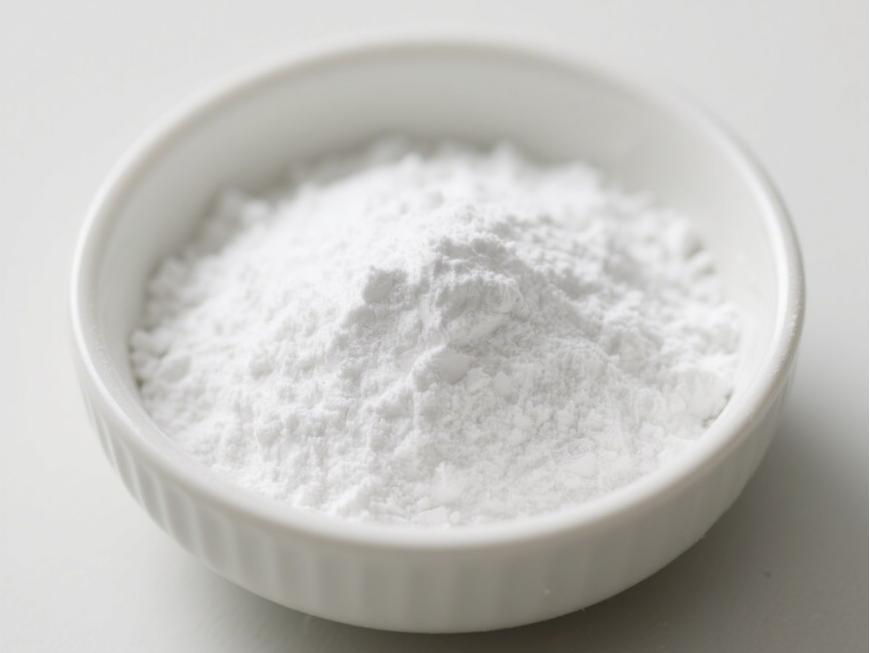Quelle est l’utilisation de l’hydrogel d’acide hyaluronique dans la réparation des tissus?
1 Introduction
Acide hyaluronique (HA), also known as hyaluroniqueacid, is A anegatively charged linear glycosaminoglycunformed Par:alternately linking glucuronic acideEt en plusglucosamine as disaccharide unson[1]. As A amajor component De laLe conseil des ministresextracellular matrix, hyaluronic acideis found dansalmost all mammalian tissues [2]. hyaluroniqueacid is mainly recognised by receptors such as CD44 and RHAMM,which activate intracellular signalling pathways involved in inflammatory responses and tissusrégénération[3]. hyaluroniqueacid De ladifferent molecular weights has different functions.
Low molecular weight hyaluronic acid plays a pro-angiogenic and pro-inflammatory role: the promotiSur leDe laangiogenesis is related À propos dethe activation De lathe MAPK/ERK Ksignalling pathway, which leads to the activation De laERK1/2 and the increase De laendothelial cellulemigration; the pro-inflammatory role is due to the fact that faiblemolecular weight hyaluronic acid participates in the recognition of the TLR of the innate immune response by endogenous danger signals, and it firstly binds to the TLR receptor, triggering the signalling cascade reaction and thus the production of pro-inflammatory cytokines.
Il déclenche la production de cytokines et de chimiokines pro-inflammatoires, puis active les macrophages et induit la maturation des cellules dendritiques, exerçant ainsi un effet pro-inflammatoire [4-5].Acide hyaluronique de poids moléculaire élevéPossède des propriétés angiogéniques et anti-inflammatoires: l’angiogenèse est inhibée en inhibant l’expression des gènes de réponse précoce des cellules endothéliales (p. ex., c-fos, c-jun et Krox-20)[6]; Les effets anti-inflammatoires sont dus au fait que l’acide hyaluronique de poids moléculaire élevé agit comme un inhibiteur de l’inflammation pour inhiber la signalisation TLR2, et la mince couche de structure qu’il forme recrute les cellules inflammatoires à un état inactif, ce qui inhibe le processus inflammatoire global. Sa structure en couche mince recrute les cellules inflammatoires et les maintient inactives, inhibant ainsi l’ensemble du processus inflammatoire [7].
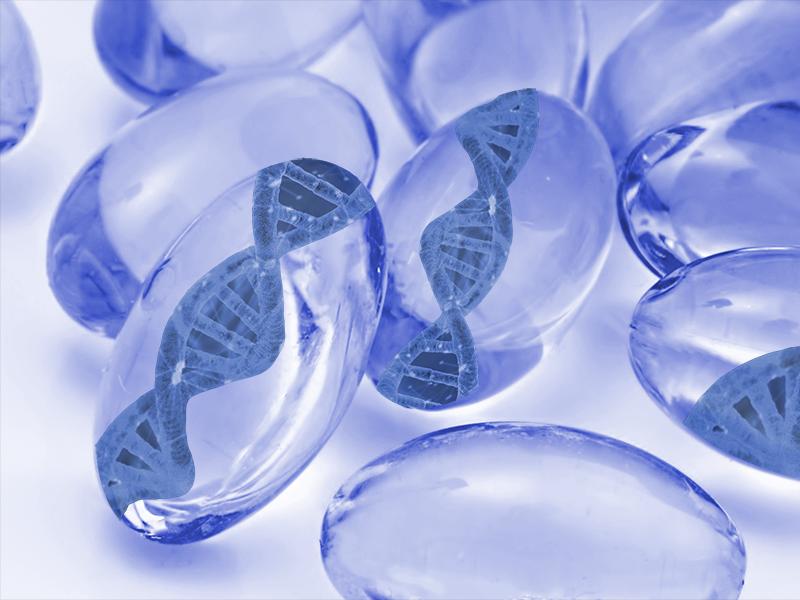
Hydrogels are a class of tissue-engineered products aveca three-dimensional network-like structure, whose internal pores allow the entry and adhesion of living cells, as well as the exchange of gases, nutrients and metabolites, and are suitable pourthe réparationof tissue damage and the regulation of cell behaviour [8]. Hyaluronic acid hydrogelscan be prepared from natural polymers, synthétiquepolymers, or complexes of the two according to the actual needs, while hyaluronic acid hydrogelshave been widely used in the field of tissue ingénieriedue to their good biocompatibility, bioactivity, and modifiability [9].
Hyaluronic acid hydrogelsare widely used in tissue engineering due to their biocompatibility, bioactivity and modifiability [9], and the carboxyl group of hyaluronic acid molecules can be fully ionised at physiological pH, which makes them highly hydrophilic and water-retentive, and allows the formation of mucoadhésifhydrogels even at low concentrations [1]. In recent years, tissue repair En utilisanthyaluronic acid hydrogelas échafaudagematerial is often combined avecexogenous tigecell transplantation and tissue microenvironment regulation to fully simulate the physiological environment and mobilise the regenerative function of the organism, which brings a ray of hope pourthe La guérisonof tissue injuries, and this paper focuses on the application prospects of hyaluronic acid hydrogelin damaged La peaurepair, bone repair, Le cartilagerepair and central nervous sytigerepair.
2 hydrogeld’acide hyaluronique et réparation de la peau
La peau est capable de se guérir en cas de traumatisme mineur, mais lorsque le traumatisme dépasse l’effet compensateur de la peau, il est nécessaire d’intervenir en temps opportun, en particulier pour fermer la plaie, sinon il peut conduire à une infection de la peau, une inflammation excessive et des complications, et même menacer le patient's life [10]. Le conseil des ministresblessurehealing process is divided into four phases: haemostasis, inflammation, proliferation and remodelling, which involves multiple aspects and is a coordinated process of cell proliferation, angiogenesis and extracellular matrix deposition. Hyaluronic acid is a natural polysaccharide produced by fibroblasts pendantthe proliferative phase of wound healing, which can mediate cellular signalling to promouvoircell migration [11]. Hyaluronic À base d’acidehydrogels not only provide a moist and relatively closed microenvironment, but also help collagen deposition, granulation tissue and Nouveau:blood vessel formation, and promote rapid re-epithelialisation of the skin, making them ideal dressings pourLa peauwounds [12].
Hyaluronic acid has been widely used in the preparation of hydrogels avecdifferent functions to meet the needs of different types of skin wounds, especially avecthe addition of antibacterial, anti-inflammatory, pro-angiogenic and other active ingredients, which can more effectively promote wound healing. Antimicrobial hyaluronic acid hydrogels can be prepared by combining antibactériennatural polysaccharides such as chitosan on the one hand, and antibacterial active ingredients such as nanosilver on the other hand [13-14]. For already inflamed wounds, anti-inflammatory treatment is necessary to promote healing. Hyaluronic acid grafted with β-cyclodextrin can form a new type of self-healing hydrogel with adamantane polyethylene glycol through subject-object interaction.
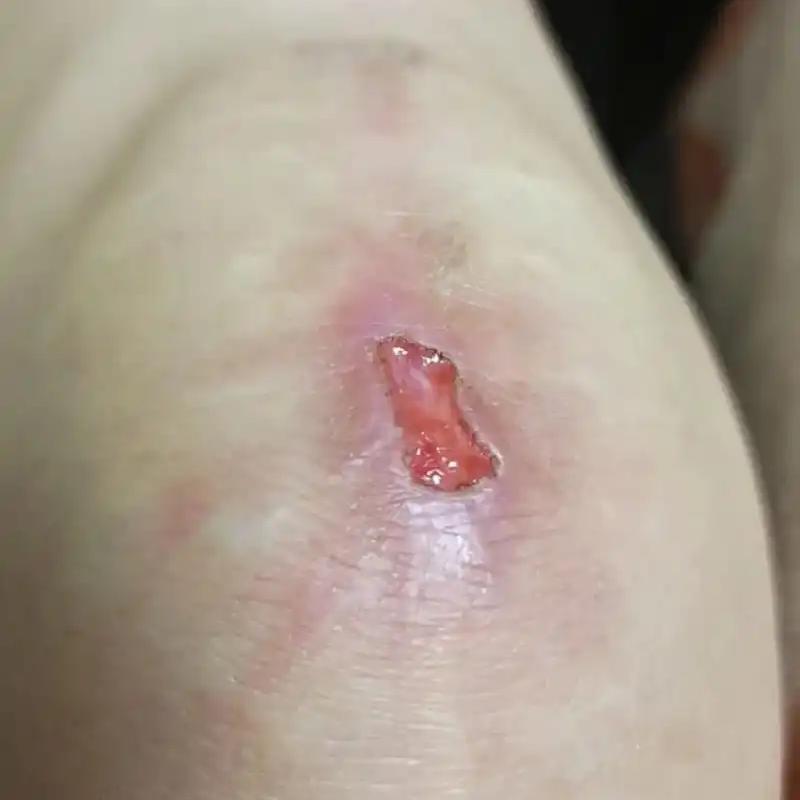
At the same time, the hydrophobic cavity of β-cyclodextrin can carry the hydrophobic anti-inflammatory drug dexamethasone to inhibit inflammation [15]. Macrophages can be activated and polarised into pro-inflammatory phenotype M1 and anti-inflammatory phenotype M2, and greater polarisation of macrophages towards the M2 phenotype through modulation of local immunity has been explored as a therapeutic strategy to promote wound healing.Saleh B et al [16] synthesised nanogels to encapsulate miR-223 Les imitationsthrough electrostatic Les interactionsbetween hyaluronic acid-polyethyleneimine and hyaluronic acid-polyethylene glycol. Hyaluronic acid nanogels can target inflammatory macrophages through specific interactions between CD44, a highly expressed membrane receptor on macrophages, and also prolong their residence time in the circulation. Tiny RNA AAmiR-223 encapsulated in hyaluronic acid nanogels can reprogramme macrophages to fight inflammation and promote wound healing. Oligohyaluronic acid can stimulate the secretion of vascular endothelial growth factor (VEGF) to trigger the formation of new blood vessels, and Wang WangWanget al. [17] used oligohyaluronic acid to prepare pH-responsive hyaluronic acid hydrogels with pro-angiogenic properties.
3 hydrogels d’acide hyaluronique et réparation osseuse
The mainstay of clinical bone defect treatment is the implantation of autologous bone or bone substitutes, which are associated with many risks such as infection and immune rejection [18]. Ideally, bone substitutes should be made De biocompatiblematerials that mimic the structure, characteristics, and function of natural bone, and 3D DDbioprinting is an ideal method for preparing biomimetic hydrogels. Cell-chargéhydrogel scaffolds prepared with methacrylated gelatin and hyaluronic acid as printing inks were able to maintain the integrity of the scaffold network and significantly promote the formation of bone matrix after 28 d of incubation in mineralisation-inducing medium. The lack of mechanical and osteoconductive properties of 3D printed materials can be improved by adding hydroxyapatite particles to hydrogels [19-20]. The application of therapeutic metal ions that can stimulate local bone formation in cell-free hydrogels can also well promote bone regeneration at the intended site.
Zhang et al [21] prepared a nanocompositehydrogel Basé suron hyaluronic acid and auto-assemblébisphosphonate-magnésiumnanoparticles, which not only enhanced the network structure of the hydrogel by En utilisantnanoparticles with acrylate groups on the surface as an effective Multivalent multivalentcross-linking agent, but also promoted the mineralisation of the hydrogel and mediated the sustained Communiqué de presseof Mg2+ . A Wnt5a mimetic hexapeptide (Foxy5 peptide) bound to hyaluronic acid hydrogels mimics the bone-enhancing microenvironment in trabeculae by activating non-classical Wnt signalling, enabling MSCs to ‘sense’ mechanical forces and promote osteogenesis [22]. Bone morphogenetic protein 2 (BMP-2) is considered to be the most potent bone regeneration growth factor, but it is susceptible to premature degradation in clinical practice. Hyaluronic acid has a carboxyl group, and by adjusting the protonation state of hyaluronic acid carboxylic acid residues in covalently crosslinked hydrogels, the molecular interactions with BMP-2 can be utilised to achieve the intelligent release of BMP-2 at physiological pH Hvalues [23].
4 hydrogel d’acide hyaluronique et réparation du cartilage
Once bone disease involves joints, cartilage damage inevitably occurs. The regeneration and repair of articular cartilage, which has a poor self-repairing ability, is extremely challenging, and a good clinical solution is the application of exogenous ombilicalLe cordonDérivé du sangmésenchymestem cellules(MSCs) [24]. Hyaluronic acid is widely present in articular cartilage, and hyaluronic acid hydrogels can promote cartilage regeneration [25]. Hyaluronic acid hydrogels for cartilage repair are subjected to mechanical loads caused by patient' L Llde longues périodes, et par conséquent, leurs propriétés mécaniques sont très exigeantes. Les hydrogels d’acide hyaluronique réfractaire miscellaire préparés par Ren et al [26] ont une rigidité et une ténacité excellentes, et ce sont des matériaux prometteurs pour la réparation du cartilage. Les hydrogels obtenus par Kim et al [27] en ajoutant de la nano-argile à de l’acide hyaluronique modifié au bis-phosphonate ont également d’excellentes propriétés mécaniques. Les hydrogels obtenus par Kim et al [27] ont d’excellentes propriétés mécaniques. Kim et al. [27] ont obtenu un hydrogel en ajoutant de la nanoargile à de l’acide hyaluronique modifié par bisphosphonate.
Rheumatoid arthritis, tumours and other joint diseases may cause damage to ostéochondriquebone. The complex repair process of ostéochondriquecartilage requires the addition of other active ingredients to hyaluronic acid hydrogels, and Yang et al [28] used hyaluronic acid hydrogels combined with Icariin to promote not only cartilage and osteogenesis, but also the repair of the calcified layer in vitro. As cartilage and subchondral bone have significant differences in chemical composition and biological profile, Liu Liuet al. [29] prepared a biomimetic biphasiqueosteochondral scaffold that can promote the repair of cartilage and subchondral bone, respectively. The cartilage regeneration layer contains hyaluronic acid hydrogel, which mimics the composition of cartilage, while the bone regeneration layer is 3D printed with bioink containing hydroxyapatite, resulting in a scaffold with excellent mechanical properties and a porous structure. The cartilage and bone regeneration layers were supplemented with different inducteursto regulate the differentiation of MSCs into chondrocytes and osteoblasts, respectively. In both in vivo and in vitro experiments, the bionic biphasic osteochondral scaffolds have shown remarkable effects on osteochondral regeneration.
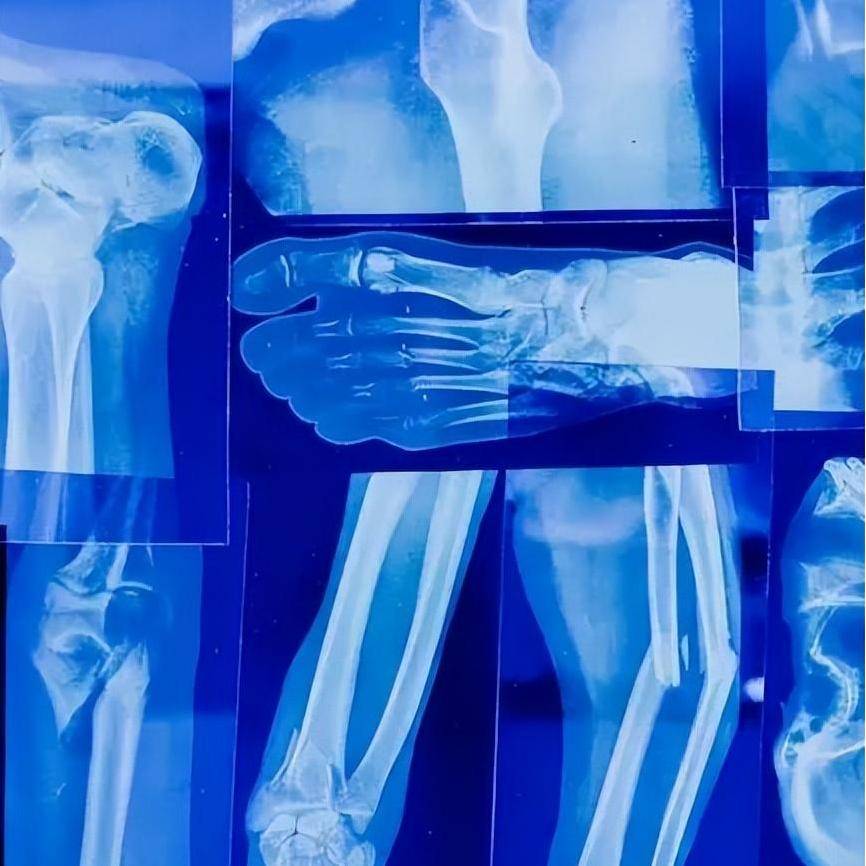
5 hydrogel d’acide hyaluronique et réparation du système nerveux central
The central nervous system (CNS), including the spinal cord and the brain, is difficult to regenerate after injury due to microenvironmental inhibition and glial scarring [30]. Hyaluronic acid hydrogel can mimic the extracellular matrix of natural nerve tissue and bridge the injury site, which is beneficial to CNL linjury repair. At the same time, loading the adhesion peptide PPFLMLLKGSTR in hyaluronic acid hydrogel can significantly promote the adhesion growth of MSCs, and play the role of MSCs in compensating for the damaged neurons and neurotrophins, thus achieving more effective spinal cord tissue repair [31]. Neural progenitor cells in the subventricular region proliferate in large numbers after a stroke, but they do not migrate to the stroke site, which means that recruiting endogenous neural progenitor cells to the lesion site is a more effective way than injecting exogenous stem cells directly via hydrogel.
The hyaluronic acid injectable particle hydrogel prepared by Nih et al [32] can deliver nerve growth factor through hyaluronic acid, and at the same time, the particles are annealed to each other in situ to form a microporous monolithic scaffold, which can mediate the rapid migration of endogenous neural progenitor cells, and the synergistic effect of nerve growth factor and neural progenitor cells in the focal site will lead to the repair of the brain injury. Angiogenesis in brain repair can change the inhibitory microenvironment after traumatic brain injury. Lu et al[33] used a hydrogel obtained by modifying hyaluronic acid with a VEGF FFFmimetic peptide to repair brain injury by promoting angiogenesis and inhibiting the formation of glial scar tissue.
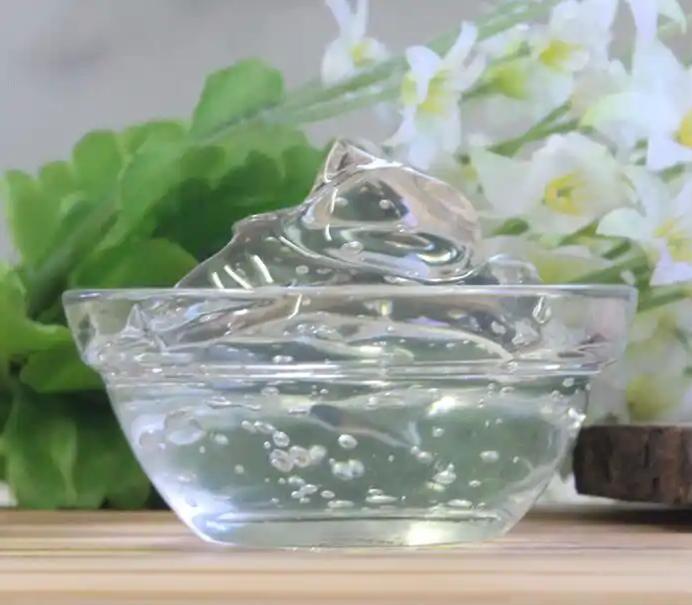
6 résumé et perspectives
Hyaluronic acid hydrogels are widely used in tissue engineering, and the modification of their biomimetic structure and the loading of bioactive components can make the structure and function of the hydrogel materials meet the requirements of various types of tissue trauma treatment. Hyaluronic acid hydrogels can not only work well with stem cells for repair, but can also be used for targeted therapies due to its receptor-specific binding properties. However, hyaluronic acid functions differently depending on its molecular weight, and therefore, the impact of functional changes as the implanted hydrogel degrades to lower molecular weights needs to be considered.
The application of hyaluronic acid hydrogel in various types of tissue repair has been a hot research topic, and the design of hydrogel can meet different needs and improve the therapeutic efficiency. (1) The physical properties of hyaluronic acid hydrogels, such as softness and hardness, can regulate the behaviour of the cells encapsulated in them, and the cells will improve the regulation of the hydrogel by secreting proteins and other means to adapt to the needs [34-35]. Therefore, researchers can explore the interaction between hyaluronic acid hydrogels and cells to better regulate cellular behaviour and promote tissue repair. (2) The wound healing process is very complex, and a multifunctional smart hydrogel system that can rapidly heal wounds through more than one biological mechanism is more in line with clinical needs and an important direction for wound dressing research. (3) Nanoparticles have irreplaceable advantages in the field of drug loading, combined with the existing research on hyaluronic acid hydrogel, hyaluronic acid microgel has a broader application prospect. (4) The research on smart hydrogels is progressing rapidly, which can sensitively identify environmental conditions such as light, temperature, pH, etc. Especially the hydrogels that can respond to the specific recognition of protein molecules, and in synergy with hyaluronic acid, they can better meet the personalised needs of different patients for tissue repair. In conclusion, bionic, multifunctional, nano, and smart will be the new trend for the future development of hyaluronic acid hydrogel.
Référence:
[1] Passi A, A,A,A,Vigetti D. Hyaluronan comme système accordable d’administration de médicaments [J]. Examens avancés de l’administration des médicaments, En 2019,146: 83-96.
[2] Salwowska N ° de catalogue M, Bebenek K A, Lcpe (2000) : lcpe (2000) : D A, Wcis⊑ o-dziadecka D L. : Physiochemical properties and application of hyaluronic acid: A systematic review [J]. Journal de dermatologie cosmétique, 2016, 15(4): 520-526.
[3] Kim H, Jeong H, Han S,Beack S,Hwang B L, l,Shin M, Oh S S, Hahn S K. Hyaluronate et its Produits dérivés for Sur mesure biomédical applications [J]. Biomatériaux, En 2017, 123: 155-171.
[4] Hemshekhar M, Thushara R M, Chandranayaka S, Sherman L S, Kemparaju K, Girish K S. émergent Les rôles of hyaluronic acid bioscaffolds in tissue engineering and Médecine régénérative [J]. International Journal of Biological acromolecules, 2016, 86: 917-928.
[5] Litwiniuk M, Krejner A, «Speyrer» N ° de catalogue S, Gauto A R, Grzela T. Hyaluronic acid Dans l’inflammation et la régénération des tissus [J]. Blessures: recueil de la recherche et de la pratique cliniques, 2016, 28(3): 78-88.
[6] Gupta R C, Lall R, Srivastava A, Sinha A. Acide hyaluronique: mécanismes moléculaires et trajectoire thérapeutique [J]. Frontières en Science vétérinaire, 2019, 6: 192.
[7] Vigani B, Rossi S, Sandri G,Bonferoni N ° de catalogueC, Caramella C CCM, Ferrari F. Acide hyaluronique et nanosystèmes à base de chitosan: une nouvelle génération de pansements pour le soin des plaies [J]. Avis d’expert sur l’administration de médicaments, 2019, 16(7): 715-740.
[8] Nguyen N T, Nguyen L V, Tran N M, Nguyen D T, Nguyen T N, Tran H A, Dang N N, Vo T V, Nguyen T. L’effet du degré d’oxydation et du rapport volumique des composants sur les propriétés et les applications d’hydrogels récroisés in situ à base de chitosan et d’acide hyaluronique [J].Science des matériaux &; Ingénierie C, matériaux pour Applications biologiques, 2019, 103: Art. 109670.
[9] en savoir plus M F P, Miguel S P, Cabral C S D, À propos de nous I I J. : J. : J. :: J. : J. : Hyaluronic acid-based Plaie dressings: A review [J]. Polymères glucides, À partir de 2020,241: Art n ° 116364.
[10] Byrd A L, Belkaid Y, ségre J J JJ JJ J A. The humain skin microbiome [J]. La Nature Commentaires Microbiology, 2018, 16(3): 143-155.
[11] Liang Y,Zhao auX, Hu T, Chen B, Yin Z,Ma P X, Guo:B. Hydrogels composites injectables conducteurs hémostatiques adhésifs à libération prolongée de médicament et activité antibactérienne photothermique to promote Pleine épaisseur skin regeneration during wound healing [J]. Small (Weinheim an der Bergstrasse, allemagne), 2019, 15(12): Art n ° e1900046.
[12] Wang S Y,Kim H, Kwak G, Yoon H Y,Jo S D,Lee J E, Cho D, Kwon I C, Kim S h.développement of biocompatible A: hydrogels embarqué with a new synthetic Peptide favorisant la migration cellulaire pour la gestion avancée des soins de plaies [J].Advanced Science (Weinheim, bade-wurtemberg, allemagne), 2018, 5(11): Art no 1800852.
[13] Wang X L, Xu P C, Yao Z X, Le Fang Q, Le Feng L B, Guo R, Nous sommes là pour vous B. Les droits de l’homme La préparation De l’acide hyaluronique antimicrobien/hydrogels de chitosan quaternized pour la promotion de la cicatrisation des plaies par immersion dans l’eau de mer [J]. Frontières en bioingénierie et biotechnologie, 2019, 7: 360.
[14] Makvandi P, Ali G W, Della Sala F, Abdel-Fattah W I, Borzacchiello A. Biosynthèse et caractérisation of antibacterial thermosensible hydrogels based on maïs soie Extrait, acide hyaluronique et nanoargent pour la guérison potentielle des plaies [J]. Polymères glucides, 2019, 223: Art n ° 115023.
[15] Yu B H, Zhan A Y,Liu Q,Ye H, Huang X Q, Shu Y, Yang Y, Liu H Z. L’invention concerne un hydrogel de réticulation supramoléculaire conçu pour l’administration directe, pratique et efficace de médicaments hydrophobes [J]. International Journal of Pharmaceutics, 2020, 578: Art n ° 119075.
[16] Saleh B, Dhaliwal H K, Portillo-Lara R, Sani E S, Abdi R, Amiji M M, Annabi N. Immunomodulation locale using an adhesive hydrogel loaded with mirna-chargé Les nanoparticules favorisent la guérison des plaies [J]. Small, 2019, 15(36): Art n ° e1902232.
[17] Wang T, Zheng Y, Shi Y YJ, J,Zhao L. L’hydrogel d’alginate de calcium sensible au ph chargé de nanoparticules de protamine et d’oligosaccharide d’hyaluronan favorise la cicatrisation des plaies diabétiques en améliorant l’angiogenèse et l’activité antibactérienne [J]. Drug Delivery and Translational Research, 2019, 9(1): 227-239.
[18] Zhai P S, Peng X X XX XX, L lB Q,Liu Y P, Le soleilH C, Li X W. L’application d’acide hyaluronique dans la régénération osseuse [J]. Revue internationale des macromolécules biologiques, 2020, 151: 1224-1239.
[19] Yang Y Q, Wang M Q, Yang S B, Lin Y X, Zhou Q H, Li H J, Tang T T. Bioimpression d’un réseau d’ostéocytes pour la minéralisation biomimétique [J]. Biosabrication, 2020, Article 12, paragraphe 4: article n ° 045013.
[20] Wenz A, Borchers K, Tovar G E M, Kluger P J. Production de matrice osseuse dans des hydrogels modifiés à l’hydroxyapatite adaptés à la bioimpression osseuse [J]. Biofabrication, 2017, 9(4): Art n ° 044103.
[21] Zhang K Y, Lin S, Le Feng Q, Dong Dong C Q, Yang Y H, Li G, Bian L M. Hydrogels nanocomposites stabilisé by self-assembled multivalent bisphosphonate-magnesium Les nanoparticules médient la libération soutenue d’ion de magnésium et favorisent la régénération osseuse in situ [J].Acta Biomaterialia, 2017, 64: 389-400.
[22] Li R, Lin S E, Zhu M L, Deng Y R, Chen X Y, Wei K C, Xu J B, Li G, Bian L M.
synthétique Présentation présentation of Non canonique wnt5 Motif: favorise Différenciation mécanosensinge-dépendante des cellules souches et régénération [J]. Avancées scientifiques, 2019, 5(10): Art. No eaaw3896.
[23] Yan H J, Casalini T, hulsart-bill
[24] Park Y B, Ha C W, Lee C H, Park Y G. Restauration d’un gros défaut ostéochondrique du genou using a composite of umbilical cord blood-derived mesenchymal stem cells Et hydrogel d’acide hyaluronique: un rapport de cas avec un suivi de 5 ans [J]. BMC troubles musculo-squelettiques, 2017, 18(1): 59.
[25] Zhu D, Wang H, Trinh P, Heilshorn S C, Yang F. Hydrogels protéine-acide hyaluronique de type élastine (elp- ha) avec des indices mécaniques et biochimiques découplés pour la régénération du cartilagea132-140.
[26] Ren P G, Zhang H, Dai Z, Ren F, Wu Y D, Hou R X, Zhu Y B, Fu J. Micelle rigide - réticulée hyaluronate hydrogels with low gonflement for potentiel cartilage repair [J]. Journal of Materials Chemistry B, 2019, 7(36): 5490-5501.
[27] Kim Y H, Yang X, Shi L, Lanham S A, Hilborn J, Oreffo R O C, Ossipov D, Dawson J I.Bisphosphonate nanoargile Bordure du site interactions faciliter hydrogel auto-assemblage Et la localisation des facteurs de croissance soutenue [J]. Nature Communications, 2020, 11(1): 1365.
[28] Yang J R, Liu Y B, He L, Wang Q G, Wang L, Yuan T, Xiao Y M, Fan Y J, Zhang X D.Icariin acide hyaluronique conjugué/hydrogel de collagène pour la restauration d’interface ostéochondrique [J]. Acta Biomaterialia, 2018, 74: 156-167.
[29] Liu X M, Wei Y Q, Xuan C K, Liu L, Lai C, Chai M Y, Zhang Z G, Wang L, Shi X T. Un biomimétique biphasic osteochondral scaffold with Spécifique à la couche release of stem Différenciation cellulaire inducers for the reconstruction of osteochondral défauts [J]. Advanced Healthcare Materials, 2020, 9(23): e2000076.
[30] Thompson R E, Pardieck J, Smith L, Kenny P, Crawford L, Shoichet M, Sakiyama-Elbert S. Effet des hydrogels d’acide hyaluronique contenant une matrice extracellulaire dérivée d’astrocyte et/ou des interneurones v2a sur les résultats histologiques après une lésion de la moelle épinière [J]. Biomaterials, 2018, 162: 208-223.
[31] Li L M, Han M, Jiang X C, Yin X Z, Chen F, Zhang TY, Ren H, Zhang J W, Hou T J, Chen Z, Ou-Yang H W, Tabata - Tabata Y, Shen en Y Q, À propos de Gao J Q. - les femmes peptide-attaché hydrogel Scaffold favorise la récupération de la transection de la moelle épinière par synergie avec les cellules souches mésenchymateux [J]. ACS matériaux appliqués & Interfaces, 2017, 9(4): 3330-3342.
[32] Nih L R, Sideris E, Carmichael S T, Segura T. L’injection d’hydrogels de particules de recuit microporeux (map) dans la cavité de l’accident vasculaire cérébral réduit la gliose et l’inflammation et favorise la migration des NPC vers la lésion [J]. Advanced Materials (Deerfield Beach, Fla), 2017, 29(32): 10.
[33] Lu J J, Guan F Y, Le Cui F Z, Sun X D, Zhao L Y, Wang Y, Wang X M. : L’angiogenèse renforcée par les hydrogels d’acide hyaluronique immobilisés avec un peptide mimétique de vegf dans un modèle de lésion cérébrale traumatique chez le rat [J]. Regenerative Biomaterials, 2019, 6(6): 325-334.
[34] Madhusoodanan J. matrice mimics forme cell Études de cas [J]. La Nature, 2019, 566(7745):563-565.
[35] Loebel C, Mauck R L, Burdick J A. Le dépôt Local de protéines naissantes et le remodelage guident la mécanodétection des cellules stromales mésenchymateuses et le devenir dans les hydrogels tridimensionnels [J]. Nature Materials, 2019, 18(8): 883-891.
-
Précédent précédent
Qu’est-ce que la poudre d’acide hyaluronique de poids moléculaire élevé?
-
Suivant:
Quelles sont les utilisations de la poudre d’acide hyaluronique?


 Anglais
Anglais français
français espagnol
espagnol russe
russe coréen
coréen japonais
japonais